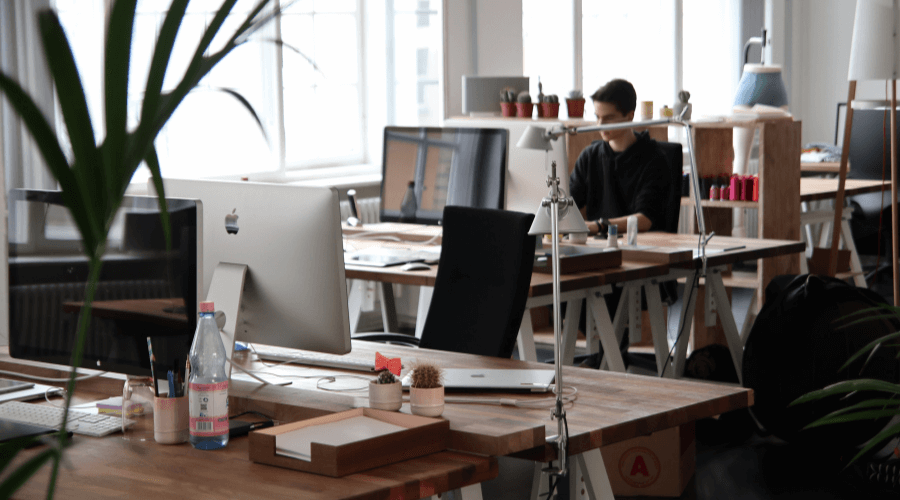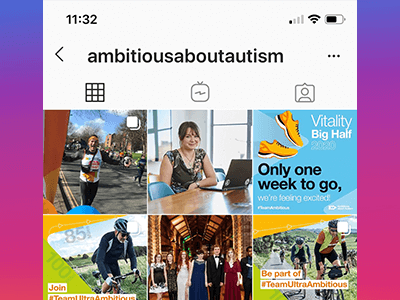Supporting autistic colleagues back into physical workspaces
As the Covid-19 working restrictions ease, some workplaces have decided to do away with the traditional office work environment and allow staff to work from home permanently.
However, others are looking at ways they can enable staff to return to the office. This is not straight forward as social distancing has to be followed. Some workplaces have implemented one-way systems, created bubbles of workers or moved entirely to hot desking to name a few.
Changes such as these can have a big impact on autistic employees. In this blog I would like to explain some of the ways employers can help these staff members make a successful and supported move back into physical workspaces.
Hot desking
Many people returning to their office may find that they are not able to return to the desk they previously used. Some offices are optioning to implement a ‘hot desking’ policy where you sit at a different desk each time you are in the office. Others have moved desks around so staff may be assigned to a desk in an area they have never sat in before.
These changes to desk working can be problematic for autistic employees who thrive on routine. Having a set desk can be a very important part of this routine, and the desk may also have been equipped with specialist equipment to support their sensory needs, such as a special type of lighting.
Taking away the certainty of knowing your workplace can be very difficult for autistic staff.
To support them, have a discussion with your autistic colleagues and ask them what their needs are.
If permanent desks are still being used, check that the new environment is still in a suitable place, considering the change in sensory dynamics and ensure any previous adjustments are factored into new settings. If your office has moved to a 100% hotdesking policy ask your autistic staff if they are comfortable with this, if not make sure they can be allocated a permanent desk.
Social distancing rules in the workplace
As we all know, social distancing measures mean public spaces now function in a different way from before. Whether its one-way systems to reduce crowding, reduction in seats available or reducing furnishings to give more space, we’re all getting us to new rules and this will inevitably be the same in work spaces. These significant changes in how we are expected to act and behave in a space can be stressful for everyone, but especially autistic people who may struggle with unexpected changes, changing of rules and may also find it difficult to pick up on new unspoken rules around office etiquette.
Providing autistic colleagues with a virtual tour before they return to the workplace can really help alleviate some of this anxiety. It doesn’t have to be the best production value but a walk through, filmed on a phone can show how a space functions. Start at the entrance of a building if possible to show anything that has changed - or stayed the same! Record any changes at reception - such as a new signing in and out system. Share any visuals of a one-way system, changes to desk layout, kitchen facilities, lifts or stairs - the list could be exhaustive.
If possible allow the staff member to do a pre-visit at a quiet time to familiarise themselves with the new environment. You may want to create a map including any one-way systems so it is clear in advance what changes have been made. Be mindful if there is less equipment or furniture in spaces, acoustics may also change which could impact on autistic staff.
Sensory awareness
Depending on your place of work there may be “social bubbles” to allow teams to return to workspaces and collaborate in person whilst keeping distance from other teams. This may mean facilities such as canteen areas have been extended to new parts of the office to reduce crowding at peak times. If that means there’s now a microwave in a new area or a kettle, think about what impact this may have on your autistic colleagues who may have hyper-sensitivities to the different senses. Specifically hearing and smell, these new sensory inputs could be hugely distracting and could affect someone’s ability to do their job properly, could cause distress or even a physical reaction for some people. If this is the case in your office, consider where these new areas are situated and if it’s possible to create some sensory boundaries to reduce the impact. Ask your colleagues with autism if this is affecting them and look at ways of alleviating this additional input.
Have a conversation
Above all, the best thing to do is have open conversations with your autistic staff and ask what their preferences are in terms of working at home or in the office. Some people may prefer the structure and routine of a commute and office life, others may have found that working from home actually suits them better and they can be more productive without the distractions of other people. Be clear and consistent with new working rules and if they change give advance warning and explain what is happening and why.
About the author
Felicity Carter is Programme Manager for Employ Autism. Find out more about Felicity by reading her one page profile.












